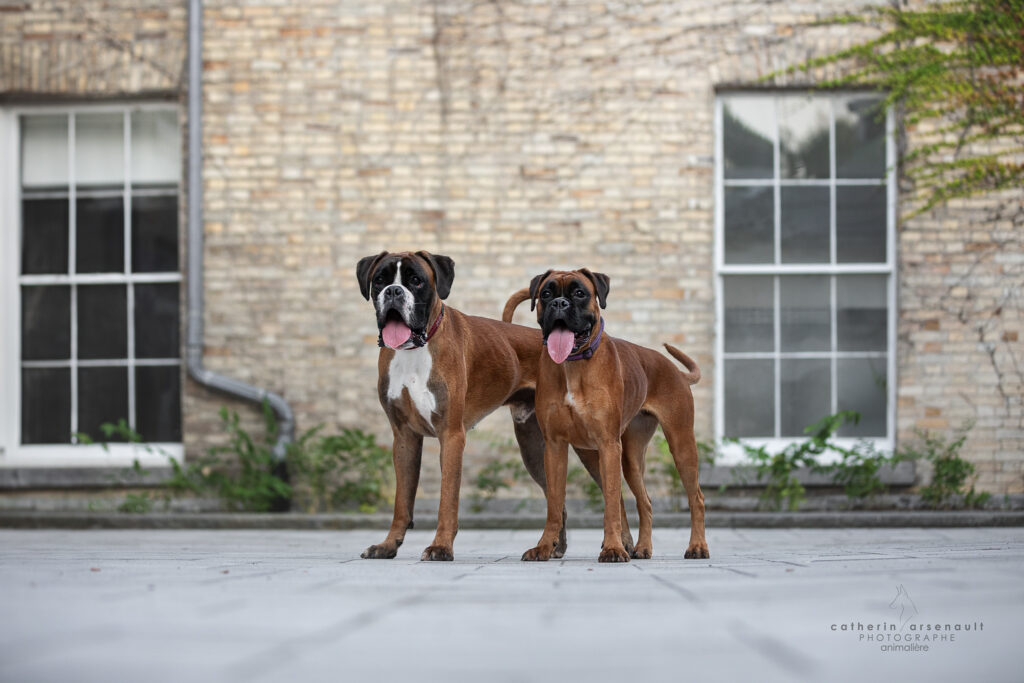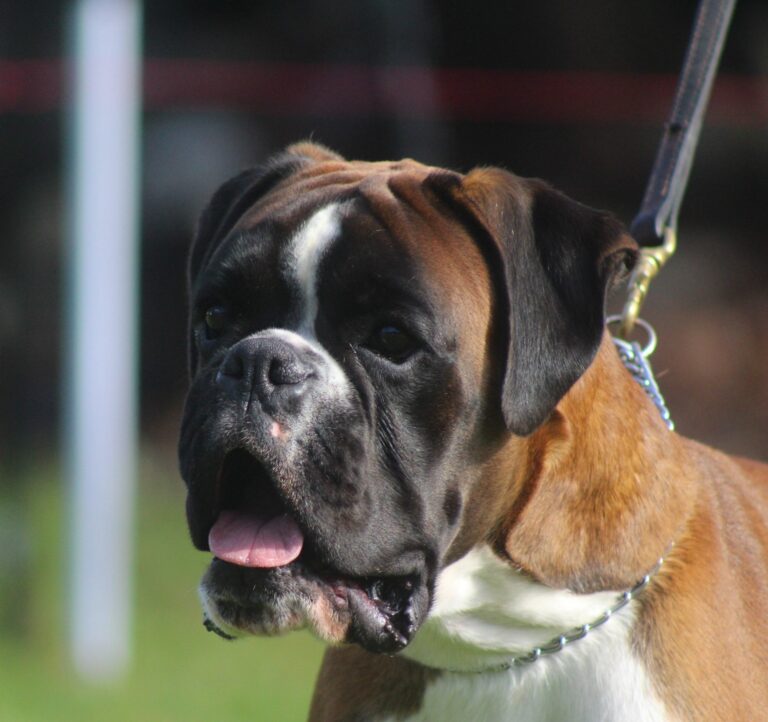His temperament
The Boxer must have strong nerves, be self-confident, calm and balanced. The attachment and loyalty he shows towards his master and his entire family have always been renowned, as well as his vigilance and unfailing courage as a defender. He is not dangerous for his family, but wary of strangers. Cheerful and friendly when playing, he ignores fear when he gets angry.
The Boxer is easy to train thanks to his docility, his assurance, his courage, his natural bite and his olfactory skills. He is a clean and easy-to-maintain dog. He is as pleasant and valuable as a family dog as he is as a support dog, a defense dog and a utility dog. His character is frank, without falsehood or sneakiness, and he retains these qualities as he ages.
His physique
The Boxer is a medium-sized dog with highly developed musculature and powerful bone structure. Its body is the result of a balance between strength and elegance.
The Boxer’s head is brachycephalic, meaning that its skull is wider than it is long. The length of its muzzle is half that of its skull. Its muzzle is prognathous, meaning that the bone of its upper jaw is shorter than that of its lower jaw. Its nose is black, voluminous and raised in relation to the muzzle. Its eyes are round and dark brown in color. Its ears rest against its cheek when it is at rest and fall forward in a sharp fold when it is attentive.
The neck is an important part of the Boxer both from a functional and aesthetic point of view. It must be long enough to allow good movement during the gallop, but must also contribute to its elegance. It must not have a swan curve, nor be short or stocky. Its thorax is well developed to allow good breathing capacity and it goes down to the elbow.
Its coat is short-haired and its color is fawn or brindle. Fawn can have different tones, from light shades to deer red. Brindle consists of black stripes on a fawn coat. The stripes can be more or less wide and numerous, but must stand out well against the background color. Touches of white are accepted, but must not exceed a third of the surface of the dog.

For more details regarding the Boxer breed standard, please refer to the Federation Cynologique Internationale (FCI) standard.

